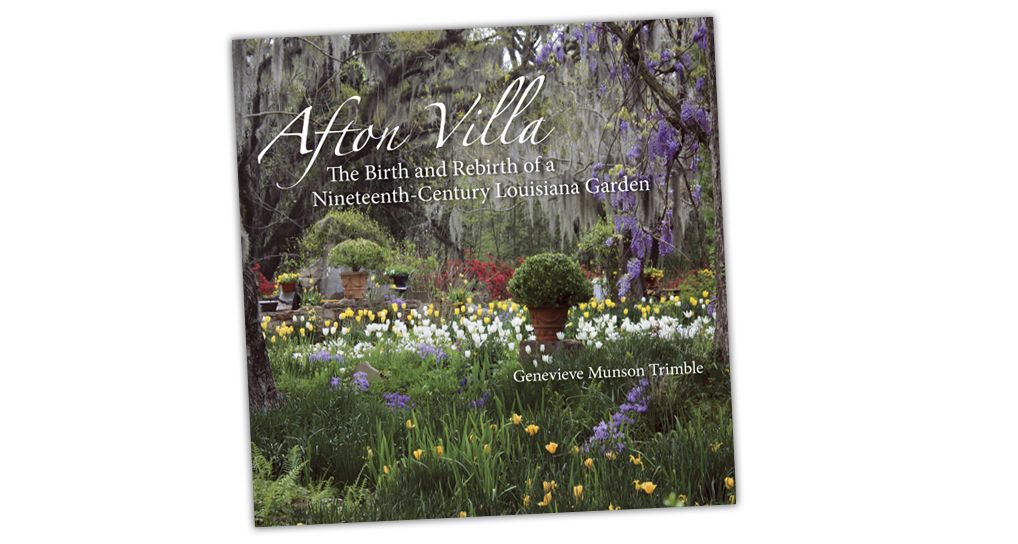Reviewing Genevieve Munson Trimble’s book, Afton Villa
Genevieve Munson Trimble remembers Afton Villa the way few people do: as a grand Victorian Gothic plantation home complete with a curving half-mile-long driveway beneath arching live oaks. She was very young the first time she saw the house and its surrounding gardens, but she never forgot its beauty.
“All of this impressed me as being one of the most romantic places I had ever seen,” Trimble writes in the new book Afton Villa: The Birth and Rebirth of a Nineteenth-Century Louisiana Garden.
The house at Afton Villa was destroyed by fire in 1963, but Trimble still felt drawn to the estate, and in 1972 she and her husband purchased it and embarked on what would be a 40-year renovation of the property’s gardens.
Trimble’s book serves as history lesson, gardener’s diary and tour guide. She explains how the simple original home was surrounded by an elaborate addition in the mid-1800s. “The result: a villa of more than 40 rooms … reminiscent of a fairy-tale castle,” writes Trimble.
The estate was known for its exquisite landscape, but those garden glory days were long in the past when Trimble and her husband became its caretakers. Previously pristine parterre gardens were without a single flower; wild vines twisted over every tree. “And right in the middle with the highest visibility was the great, unmanageable, unsightly hulk of Gothic ruin, with full-grown native trees springing out from the crevices of the stones,” she writes. “What could we have been thinking?”
Only momentarily discouraged, the pair pressed on. They decided not to re-create the original garden but rather to restore its spirit, using old plants when they could but not limiting themselves to impossible ideals.
Trimble escorts readers through the estate’s garden rooms, from the Daffodil Valley to the Music Room to the Ruins Garden, where crumbling bricks are now enveloped by pansies, tulips and wisteria. Using notes from her journals, Trimble provides planting details that should inspire any Southern gardener.
Trimble’s triumph is shared with visitors during the annual Audubon Pilgrimage and beyond. All who walk the grounds are enthralled by the blooming beauty that has risen from ashes.
“One day when I was sitting in the ruins, a visitor came up and asked, ‘ Could you tell me please where the old house once was?’” writes Trimble. “‘Yes, certainly,’ I said, ‘you are standing in it.’ At last, I thought, the garden has finally embraced the ruin of what had been a tragedy.”












